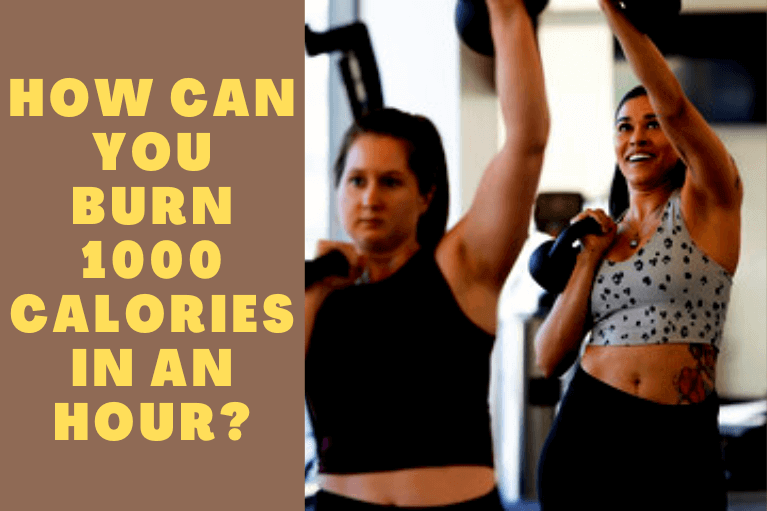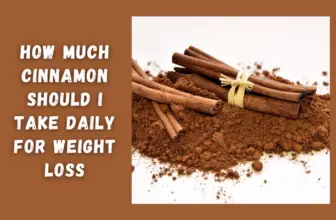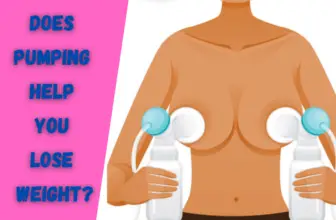How Can You Burn 1000 Calories In An Hour?

It’s not easy to burn 1,000 calories in an hour, but it’s definitely doable with some hard work and dedication. Your weight and metabolic rate determine how many calories you burn while exercising, so keep these in mind.
This article will reveal the secret formulas that can help you lose 1000 calories in an hour through hard work and dedication. So, if you want to learn the secret to burning 1000 calories in an hour, this article is for you!
How Do You Burn 1000 Calories Within An Hour?
To burn 1,000 calories in an hour, you need to do intense workouts that make the body work at maximum capacity. High-intensity exercise methods, like circuit and interval training, are not the best suited for everyone looking to lose weight. The health benefits of high-intensity workout routines are enormous, but properly executing such exercise requires a certain level of predetermined physical fitness.
This is why it is better to talk to your physician before attempting to burn 1,000 calories in one hour. In the following list, we will show you some of the best techniques you can try, depending on your physical fitness, to lose 1000 calories through intense workout routines.
The following are the ways to burn 1000 calories in an hour:
- Sprint Training: Sprinting is an effective training method for losing 1000 calories in an hour. Running at eight miles per hour for 60 minutes will burn 1,074 calories for a 200-pound person. Sprinting, on the other hand, differs from traditional running methods. A sprint interval session of 30 seconds followed by five minutes of jogging can burn 1,000 calories in less than 30 minutes. According to the American Physiological Society, sprint interval training can burn 200 calories in just 2.5 minutes.
- Running: Running can burn anywhere from 11 to 17 calories per minute, but the exact numbers depend on how much you weigh and how fast you run. If you weigh 150 pounds, burn 15 calories per minute, and can run a mile in 10 minutes. Running for 70 minutes or 7 miles would burn 1,000 calories. This, however, requires that you keep the same pace for the entire 7 miles. If you slow down even slightly, it will take you more time to burn 1,000 calories.
- Circuit Training: Circuit training is a highly efficient exercise strategy for quickly burning hundreds of calories. The idea behind circuit training is simple: reduce rest time between sets to increase your heart rate. This type of exercise will make your weightlifting sessions more intense. An effective circuit training session should include exercises targeting different muscle groups. For example, combining pushups, deadlifts, and shoulder presses into your circuit training routine will allow you to exercise most of your body’s major muscles while improving overall endurance and burning calories.
- Cycling: If you cycle at 10–12 mph, you can burn about 7 calories per minute, depending on your weight. If you increase the speed to 14–16 mph, you can burn 15 calories per minute. Based on these figures, you’d have to run at 14 mph for 65–70 minutes to burn 1,000 calories. How can you calculate the amount of calories you can burn per hour? As per the American Council on Exercise, a person consuming 1 liter of oxygen burns about 5 calories.
- Intense Cardio: Cardiovascular exercises can also help burn 1000 calories in an hour. Sport, dancing, jumping rope, kayaking, and water sports are all great cardio exercises. Jump rope can burn up to 1,074 calories in an hour for a 200-pound person. You can shed the same number of calories with 60 minutes of rowing, and swimming laps in a pool can also assist you in achieving your calorie-burning goals.
Tips To Help You Lose Calories Faster
Here are some calorie-burning tips for you to follow that will make it much easier to burn your target number of calories. The advice provided here will also assist you in becoming more physically fit and healthy than you were previously.
- Take part in outdoor activities: If you frequently visit the beach, lake, or pool during the summer, don’t spend the entire time lounging in a chair. To get more activity into your day, go swimming, kayaking, or try stand-up paddle boarding.
- Do strength training: Perform strength-training exercises for all major muscle groups at least twice a week. Do a single set of exercises with a weight or resistance level to tire your muscles after 12 to 15 repetitions.
- Develop NEAT: NEAT is an acronym for non-exercise activity thermogenesis, which includes all of your daily activities other than exercise and makes them require a bit of extra physical effort, such as taking the stairs instead of lifts, forming a habit of parking a little far from your stop, eating healthy, and so on. Increasing your NEAT is a fantastic way to increase your total daily calorie output.
- Planned diet: To help your body lose calories faster, you must follow a strict diet routine consisting of fruits, vegetables, and proteins. To find the best diet plan suited for you, talk to a nutritionist who can help you form a diet plan.
Things To Consider When Trying To Lose 1000 Calories An Hour
Calorie losses are all affected by physiological factors such as resting metabolic rate and the body’s type. Age and overall physical fitness also play a role in determining how many calories your body can shed in a given amount of time. When engaging in strenuous exercise that pushes your body to exhaustion, it’s critical to remember to drink plenty of water. It’s also critical to give your body enough time to rest.
Drinking water while exercising has been scientifically proven to boost metabolism, allowing you to burn more calories in less time. Ultimately, performing high-intensity modes of exercise consistently over 60 minutes can significantly improve physical fitness while also helping you burn 1,000 calories.
Summary
Even though it is possible, burning 1000 calories requires extreme endurance and willpower. As we discussed in this article suggesting techniques to follow and things to keep in mind to lose that many calories through a one-hour workout session, you need to have rigid workout routines. You must follow the routines as planned and not slow down during workouts. If you slow down while working out, you will fail to reach the goal of losing 1000 calories in an hour.
You must also watch what you eat throughout the day when you’re not working out. Maintaining what you eat throughout the day can make burning 1000 calories in your workout sessions easier.
Also, before attempting any techniques or tips for losing 1000 calories in an hour, you must tell your doctor about your intentions. If you have a preexisting health condition that could be exacerbated by extreme high-intensity workouts, you should consult your doctor to find better ways to burn calories. Do not attempt these extreme workout routines without proper guidance or supervision.
But, if you’re a perfectly healthy individual looking to push your body to the limit, you should dive into the tips and techniques for losing 1000 calories a day as soon as possible!
Related Articles:






